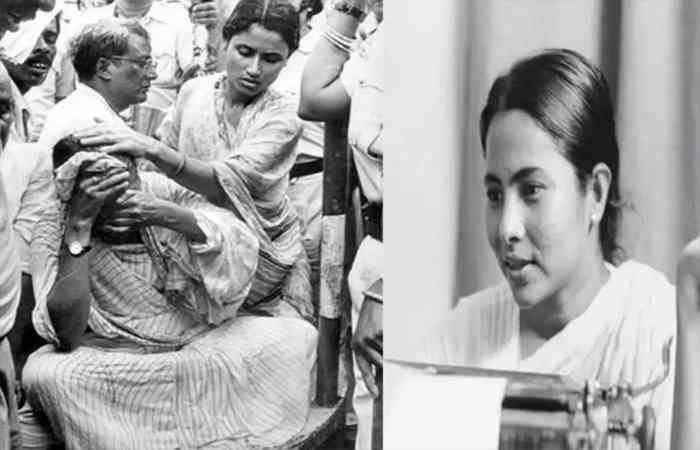
- Mamata Banerjee attacker acquitted by court after 29 years due to lack of evidence
- The highest number of 50 political murders took place in Bengal in the year 2009
New delhi date. Thursday, March 11, 2021
The attack on West Bengal Chief Minister Mamata Banerjee at Nandigram was followed by a fatal attack on her at Hajra in 1990 in which she barely recovered from the brink of death. CPI-M's alleged thug Lalu Alam carried out the attack in which Mamata sustained serious injuries. However, the Left was overwhelmed by the attack as Mamata emerged as the leader of Bengal and the power of the Left collapsed like a paper palace in her political turmoil.
Mamata Banerjee claims that violence has subsided in Bengal and she blamed the recent attack on the BJP, but the reality is that Bengal has always been notorious for political violence. Knowing the historic attack on Mamata, it is important to understand how a woman emerged as a player in power amidst the political turmoil in Bengal.
The cause of the 1990 attack
Mamata was a young Congress leader at the time. The Congress had staged a protest against the deaths due to adulteration in edible oil. Mamata held rallies in several places. An alleged Communist Party goon, Alam, stabbed Mamata in the head with a sharp weapon while she was on her way to a rally in Hazara.
The attack was so dangerous that Mamata's life was in danger. The court took cognizance of the case and initiated a case on charges of attempted murder and rioting. It is also a question of who Alam was when he was released on bail two months later.
Lalu Alam was earlier a Congress worker but joined the Marxist Communist Party in 1980. Alam's courage began to grow because of the influence of his brother and the district-level communist leader Badshah. The two brothers were expelled by the party after heavy criticism of the attack on Mamata. The case against Mamata began in 1992 and has been pending for years in the wake of Left politics.
After a 29-year trial, the court acquitted Alam, saying there was not enough evidence against him. Mamata Banerjee expressed her displeasure over the verdict. However, the stories of political violence in Bengal have been many times more scary and gruesome than this.
Blood-stained Bengal politics
Attacks on Mamata and her party are nothing new. Also, the attacks by Mamata's party are nothing new. The BJP and the Trinamool Congress have been accusing each other of killing their own workers for the last two years. However, this bloody conflict is similar to the rites of Bengal politics.
The 1970s were full of tragic memories of the horrific massacre in Bengal. Until 1964, the Congress occupied Bengal, but then the Naxalite movement and the rise of the Communists went hand in hand. Very quickly Bengal was engulfed in this internal political violence and the assassination of Forward Bloc leader Hemant Basu in 1971 became an important historical event.
It has never been decided who killed Basu, who is contesting against CPI (M). Another sensational assassination of the 1970s was that of Ajit Kumar Biswas, who replaced Basu. The Left tried to come to power in the wake of the violence but it was going to be a huge shock.
The entire decade of the 70's, including the assassination of Biswas, is marked by a terrible history of political violence. Mamata Banerjee's political journey then began in the 80's and accelerated after the 1990 attacks. It was also difficult for the CPI (M) to defend the attack at that time.
Mamta became a star
After the attack, Mamata became a star and the Congress began to see a way back to Bengal. Then in 1996 the political violence in Bengal was considered very dangerous when 13 people were killed in a matter of minutes in the clashes with the protesters who clashed with the police. A similar incident took place in Singur where Mamata's party staged a protest and police opened fire. Between 2006 and 2008, the Singur and Nandigram agitations reopened the blood-soaked pages of Bengal.
Shocking statistics
According to a report released by the country's Crime Records Bureau, an average of at least 20 political murders took place in West Bengal every year between 1999 and 2016. It also had the highest number of 50 murders in 2009. The homicide graph was also very high in the years 2000, 2010 and 2011. Similar figures came up 20 years ago.
At least 86 political activists were killed in 1988-89, according to figures presented to the legislature by the then Communist leader and Chief Minister Jyoti Basu in 1989. At that time, Prime Minister Rajiv Gandhi had to say, "It has become very dangerous for communists to live in Bengal."
Comments
Post a Comment
What you think about this NEWS please post your valuable comments on this article, we will immediately publish your comments on this page